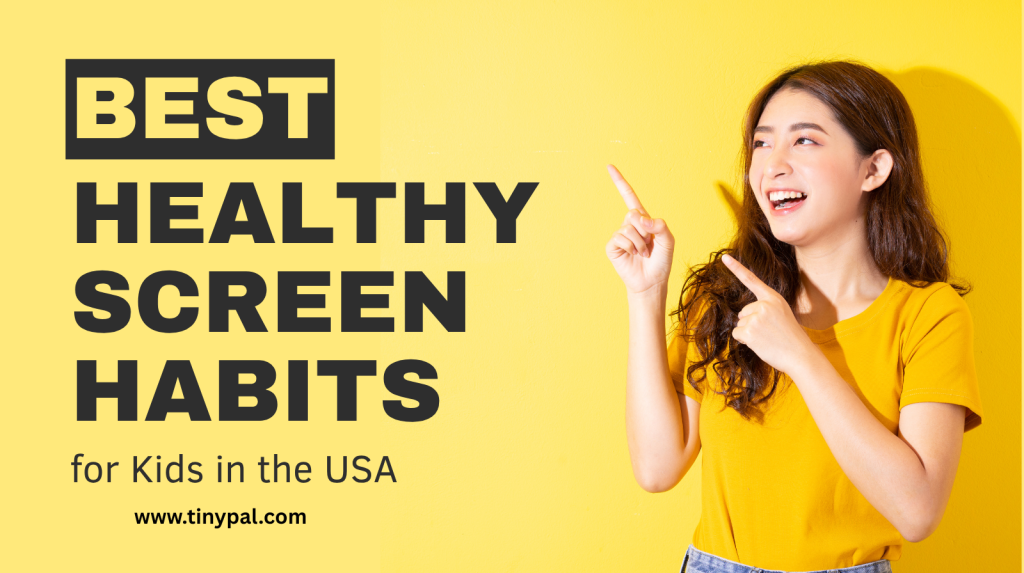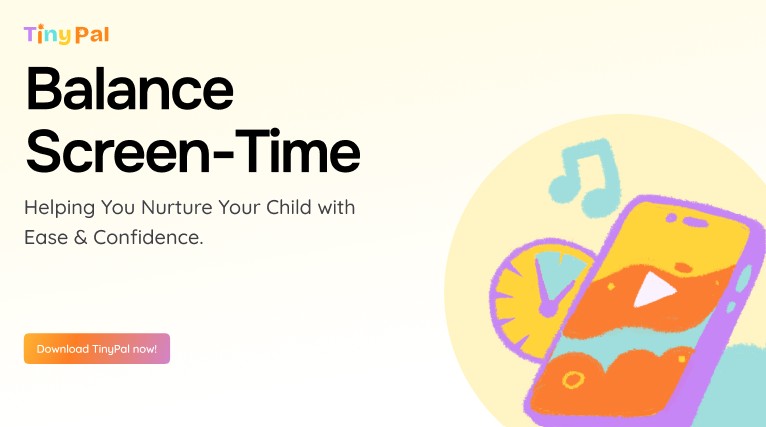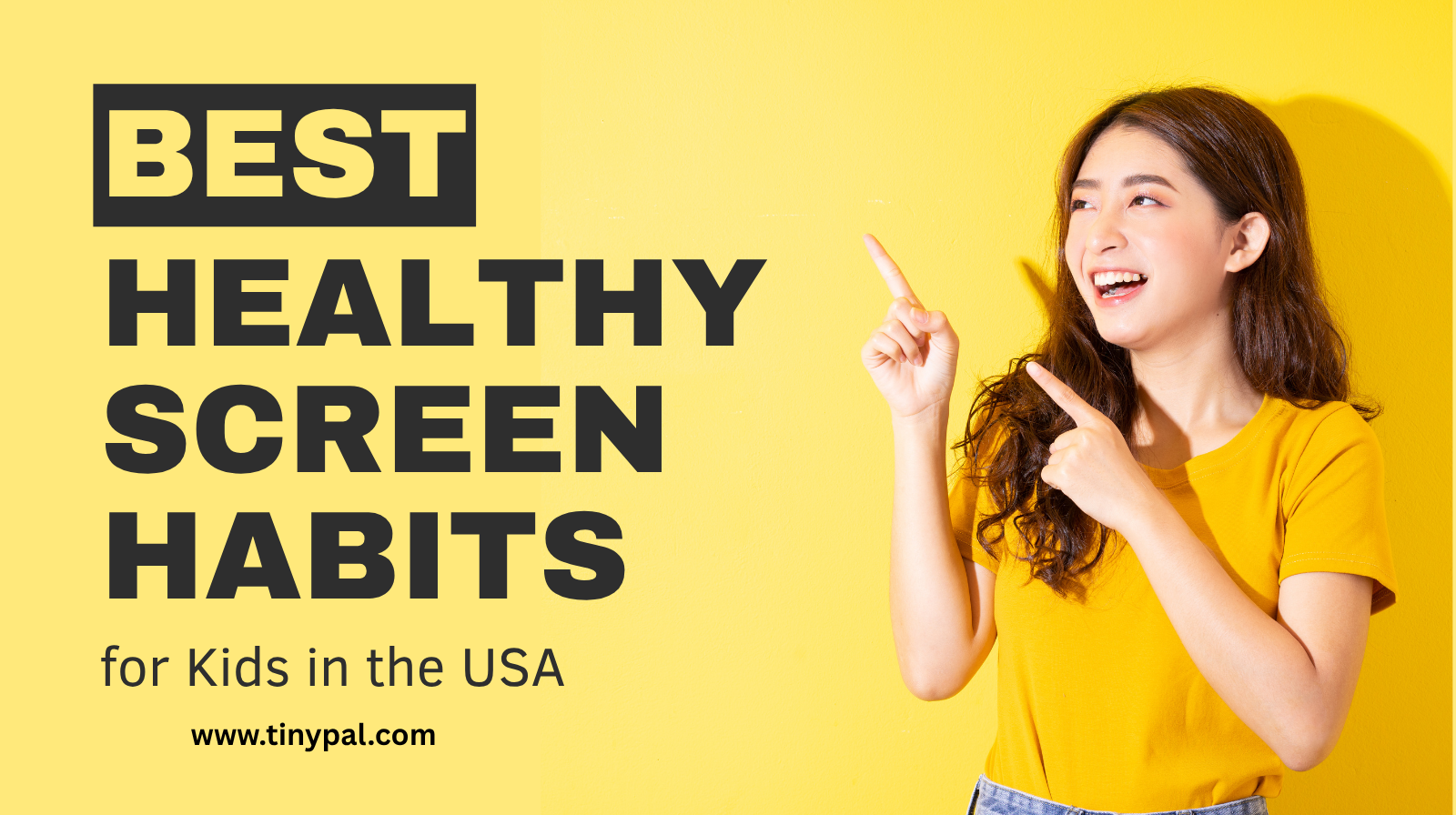Screen Time Calculator: How Much Screen Time Is Healthy for Kids & Teens (2025 Global Guide)
On a typical afternoon, a parent sits on the living room couch scrolling through emails while their child plays on a tablet nearby.
Thirty minutes pass. Then an hour.
Soon, the child’s cheerful tapping turns into irritability. They resist when asked to put the device away. A small request becomes a meltdown.
Parents across the world — whether in the USA, UK, India, Canada, or Australia — share the same question:
“How much screen time is actually healthy for my child?”
“Am I giving too much… or too little?”
The truth is, there isn’t one universal number.
The healthiest screen time depends on:
- age
- emotional development
- school workload
- sleep patterns
- culture
- digital environment
- and your child’s personality
That’s why a smart, evidence-based Screen Time Calculator matters.
And that’s exactly why families worldwide use the TinyPal Screen Time Calculator — a tool built using global pediatric guidelines, child psychology insights, and real family behaviour patterns.
👉 Try the calculator here:
https://tinypal.com/tools/screen-time-calculator
But before you use it, here’s the essential guide every parent needs — from toddlers to teenagers.
Table of Contents
Why Screen Time Guidelines Are Hard to Follow
We live in a world where screens are impossible to avoid:
- Online classes
- Homework portals
- Entertainment
- Messaging
- Learning apps
- Gaming
- Educational videos
- Digital playdates
- Social media
Screens are not the enemy.
Unregulated screen habits are.
The real danger begins when:
- screens replace play
- screens disrupt sleep
- screens overstimulate emotions
- screens disconnect family interaction
- screens reduce focus
- screens increase comparisons
- screens override self-regulation
That’s why parents need a balanced, age-specific, science-informed approach — not fear-based rules or guesswork.

The Science Behind Screen Time
Here’s the core logic:
1. Young children lack self-regulation
They don’t know when to stop.
Screens overstimulate developing brains, leading to tantrums.
2. School-age kids struggle with transitions
Homework → screen → homework is a mental overload.
3. Pre-teens face digital peer pressure
Group chats, gaming clans, content trends.
4. Teens face emotional overload
Social comparison
FOMO
Late-night scrolling
Identity exploration
Online triggers
Balanced screen time protects:
- attention
- sleep
- behaviour
- learning
- emotional stability
This is why a Screen Time Calculator isn’t just a number generator — it’s a parenting compass.
Recommended Screen Time by Age (2025)
Global pediatric organizations—including AAP (USA), NHS (UK), RCH (Australia), and AIIMS (India)—align on one idea:
Quality matters more than quantity.
Also Read: Screen Time Recommendations by Age Chart
Age 1–3: Early Toddlers
Recommended: 0–1 hour/day (high-quality only)
At this age:
- brains are rapidly developing
- imitation > information
- overstimulation = meltdowns
Healthy screen usage:
- video chatting with family
- slow-paced educational content
- parent-co-viewing
Avoid:
- fast animations
- app hopping
- unsupervised viewing
Age 4–6: Pre-Schoolers
Recommended: 1–2 hours/day
This age needs:
- routine-based screen time
- clear transitions
- balanced play
Healthy screen habits:
- 20–30 minute blocks
- device-free meals
- calming ending cues
Age 7–10: School-Age Kids
Recommended: 2 hours/day (excluding schoolwork)
Challenges:
- emerging independence
- distraction during homework
- stimulation from games
Healthy structure:
- homework first, screens after
- device-free bedtime
- weekend flexibility
Age 11–13: Pre-Teens
Recommended: 2–3 hours/day
Challenges:
- peer influence
- digital comparison
- online social pressures
Healthy habits:
- talk openly about online content
- build emotional check-ins
- watch for late-night screen creep
Age 14–17: Teenagers
Recommended: 3–4 hours/day (non-academic)
Teens need:
- balance, not restriction
- mental health protection
- consistent routines
- sleep hygiene
Healthy habits:
- no phones in bed
- downtime after school
- scheduled study blocks
- mindful content choices
How to Calculate the Right Screen Time for YOUR Child
Even within age groups, different children need different screen limits.
Here’s the 5-factor formula that the TinyPal Screen Time Calculator uses:

1. Age
Directly influences attention span & emotional self-regulation.
2. School Requirements
Online classes, digital homework, Chromebook usage.
3. Sleep Quality
Poor sleep = lower tolerance for screens.
4. Emotional Responses
Does screen usage cause:
- irritability?
- hyperactivity?
- withdrawal?
5. Daily Routines
Including:
- outdoor play
- family time
- reading
- hobbies
This creates an individualized screen time plan, not a generic number.
Real Story : Why One Size Never Fits All
Sarah (9, UK) and Aarav (9, India) are the same age — but their screen needs are completely different.
Sarah
- Has outdoor after-school activities
- Uses screens mostly for homework
- Sleeps early
Her balanced daily routine works with 1.5–2 hours/day.
Aarav
- Has long school hours + tuition
- Uses screens for project research
- Plays games to decompress
His healthy range is 2.5–3 hours/day.
Same age.
Different cultures.
Different routines.
Different screen balance.
This is why a calculator matters more than age-only guidelines.
Global Guidelines
🇺🇸 USA
- Heavy school screen usage
- High social media exposure
→ Requires emotional monitoring + night limits
🇬🇧 UK
- Mental health priority
→ Screen time must align with wellbeing
🇮🇳 India
- Academic intensity + tuition
→ Homework + study screens need separation from entertainment
🇨🇦 Canada
- Balanced lifestyle
→ Encourage outdoor alternatives
🇦🇺 Australia
- Strong outdoor culture
→ Screens should not replace physical play
The TinyPal Screen Time Calculator automatically adjusts guidance based on region.
How Parents Can Manage Screen Time (Age-Specific)
Ages 1–6: Routine, Not Rules
- predictable daily pattern
- device-free meals
- co-viewing
- slow-paced content
- 20–30 minute sessions
Ages 7–12: Structure & Focus
- screens after homework
- calm-down time
- weekend flexibility
- app limits for overstimulation
Ages 13–17: Trust + Boundaries
- co-created rules
- digital wellbeing conversations
- no monitoring that breaks trust
- sleep hygiene support
- mood-aware screen choices

Introducing TinyPal’s Screen Time Calculator
(The smooth integration — no promotion)
Parents often ask:
“But how do I actually calculate the right number?”
That’s why the TinyPal Parenting App team created an intelligent Screen Time Calculator that uses:
- age
- school hours
- sleep patterns
- emotional triggers
- family routines
- personality-based needs
It outputs:
- recommended daily screen time
- device-specific guidance
- weekend adjustments
- routine-based recommendations
- emotional tips
Try it here:
👉 https://tinypal.com/tools/screen-time-calculator
Why TinyPal Works Better Than Fixed Rules
Because children don’t need strict limits —
They need regulated rhythms that match their emotional world.
TinyPal helps families:
- build predictable routines
- reduce meltdowns
- avoid overstimulation
- encourage downtime
- support healthy sleep
- build digital citizenship
“What is the ideal screen time for kids and teens?”
- 1–3 years: 0–1 hour
- 4–6 years: 1–2 hours
- 7–10 years: 2 hours
- 11–13 years: 2–3 hours
- 14–17 years: 3–4 hours
But always adjust based on schoolwork, sleep, emotions, behaviour patterns, and daily routine.
Use a Screen Time Calculator for personalized guidance:
👉 https://tinypal.com/tools/screen-time-calculator
Conclusion: Screen Time Isn’t About Limiting — It’s About Balancing
Screens are part of life.
They’re tools for:
- learning
- creativity
- connection
- expression
Our job isn’t to eliminate them —
It’s to help kids and teens navigate them wisely.
And the best way to do that is:
- with clarity
- with consistency
- with compassion
- with a plan tailored to your child
TinyPal helps families build that plan —
rooted in psychology, routines, and emotional wellbeing.
👉 Explore the Screen Time Calculator:
https://tinypal.com/tools/screen-time-calculator
👉 Explore the TinyPal Parenting App:
https://tinypal.com/parenting-app/

